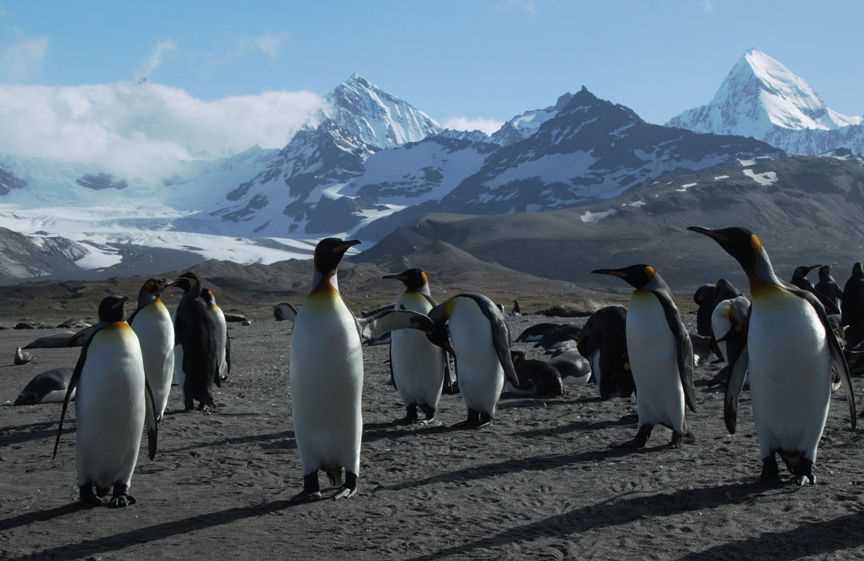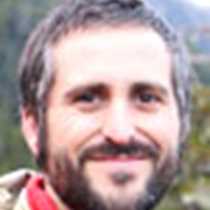This morning we awoke as National Geographic Orion rounded into Fortuna Bay. It was here, 100 years ago and well into their improbable trek across South Georgia, that Ernest Shackleton, Tom Crean, and Frank Worsley descended. Believing it at first to be Stromness Bay—the site of an active whaling station where they knew help could be found—their hopes were dashed by the sight of strongly-folded metamorphosed rock across the bay. Shackleton had seen this formation before and realized that they were in fact several miles to the west of their destination. So, with spirits weighing heavy and nearly exhausted, the men climbed back into the mountains.
Spirits were much higher aboard our ship as we passed the folded granite. Once we were tucked inside the bay, thirty or so intrepid adventurers set out to retrace Shackleton’s final steps. With bellies full of bacon, oatmeal, and eggs the party hiked the five miles from Fortuna Bay to the remains of the Stromness whaling station. On the way, and with great enthusiasm, they passed such historic sites as Crean Lake and Shackleton Falls. But surely they were moved most by the view of the whaling station from the same bluff where Shackleton stood and finally realized, against all odds, that his journey was over. Those of us who chose not to make the trek chuckled at the others’ decision. “Shackleton certainly didn’t enjoy the hike, so why should we?” some asked with bemusement. Rather than tackle the arduous hike, we tackled biscuits and lattes, and let the ship deliver us to Stromness instead. When we arrived, the hikers were descending upon the whaling station and together we all shared a great view of the historic site.
Back on board and happily satiated with a lunch of curry and pappadums, we continued on to St. Andrews Bay. Once there, we ventured ashore and marveled at the spectacle that was South Georgia’s largest king penguin colony. Hundreds of thousands of birds marched about on the beach. Though most were oblivious to us, some approached curiously to see who these new birds were, clad in their featherless orange parkas. As always, there were also fur seals: 350 pounds each of teeth and male bravado, staking claim to their own invisible territories. Despite their ornery disposition, they were easily scattered whenever our fearless naturalists waved their wooden walking sticks. For many though it was the elephant seals, who we encountered in numbers unlike anywhere else, that were most exciting. Hundreds, perhaps thousands, lay about on the beach, belching and farting, as we walked among them. Every so often a giant male, some 3000 pounds, would lunge from the surf and challenge a resident “beachmaster” for a female from his harem, only to be chased back into the sea. The sheer size of these animals, and their deep, resonant bellowing impressed us all to no end.
Eventually, as the evening drew to a close, it was time to return to the ship. And so we shared stories over dinner, then retired for another day.







